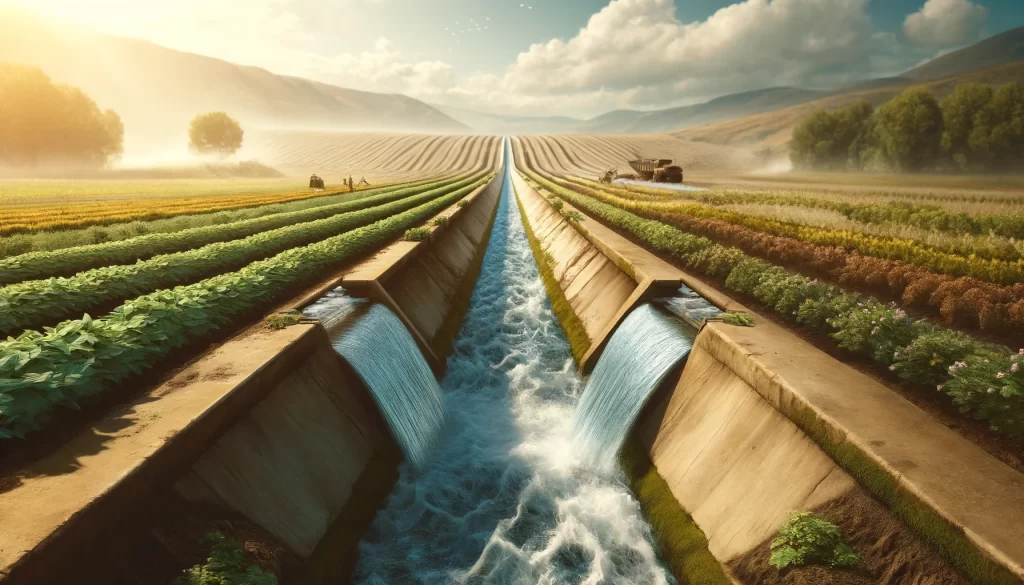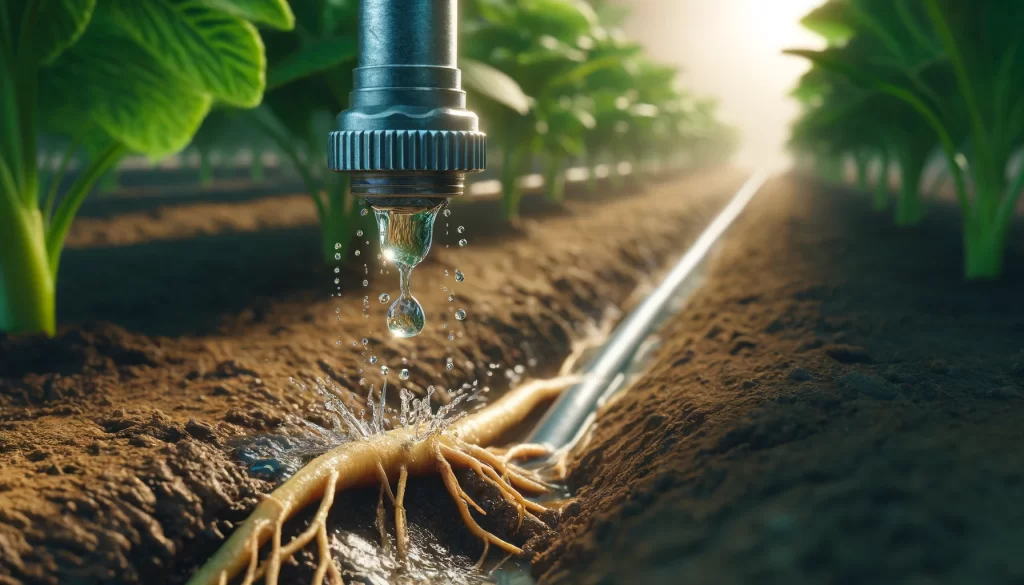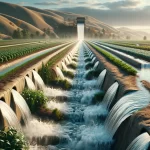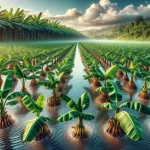What are irrigation systems?
Irrigation systems are sets of techniques, methods, and devices used to supply water to crops in a controlled and efficient manner. The main objective of these systems is to provide the right amount of water at the right time to meet the water needs of plants and maximize their growth and yield.

These systems can vary considerably in complexity and size, from simple gravity irrigation methods to highly sophisticated automated systems.
Common Components of Irrigation Systems
- Water Source: It can be a river, reservoir, well, or rainwater collection system.
- Distribution Network: Pipelines, pipes, canals, or ditches that transport water from the source to the fields.
- Control Devices: Valves, gates, and pressure regulators that control the flow and distribution of water in the system.
- Application Devices: Such as sprinklers, drippers, micro-sprinklers, or flood irrigation systems that deliver water directly to the plants.
- Control System: In more advanced systems, automatic control devices are used to adjust irrigation based on factors such as soil moisture, temperature, and crop water demand.
Irrigation systems are fundamental in modern agriculture, as they allow for increased crop productivity and optimized water resource usage. Additionally, they contribute to agricultural sustainability by reducing reliance on rainfall and minimizing water waste.

What Are the Types of Irrigation Systems?
There are several irrigation systems used in agriculture, each with its own advantages and specific applications. Here are some of the most common systems:
Gravity Irrigation
This is one of the oldest and simplest systems, where water flows naturally from an elevated source, such as a canal or ditch, to the fields.
Gravity Irrigation – Irrigation Systems

Flood Irrigation
It involves flooding the land with water, allowing it to seep slowly into the soil. It’s common in crops like rice and on flat terrains.
Flood Irrigation – Irrigation Systems
Chinampas: Sustainable and Traditional Agriculture System
Sprinkler Irrigation
It uses sprinklers to spray water over the crop in fine droplets. This system is versatile and suitable for a wide variety of crops and soil types.
Sprinkler Irrigation – Irrigation Systems
Drip Irrigation
This system delivers water directly to the base of plants through tubes or hoses with small holes or emitters. It’s highly efficient in terms of water usage and widely used in horticultural and fruit crops.
Drip Irrigation – Irrigation Systems

Subsurface Irrigation
In this system, water is supplied through pipes buried beneath the soil surface, which helps minimize evaporation and reduces interference with agricultural activities.
Center Pivot Irrigation
It consists of a system of pipes mounted on wheels extending from a central point and rotating around the field, spraying water as they move. It’s common in large land areas, such as cereal agriculture.

Microsprinkler Irrigation
Similar to sprinkler irrigation, but with smaller emitters that spray water more precisely and in smaller quantities. It’s especially used in vegetable crops and fruit trees.
These are just some examples of irrigation systems used in agriculture, and the choice of the right system depends on various factors such as the type of crop, soil and climate conditions, as well as water and resource availability.
 AgronoBlog – Agriculture Blog
AgronoBlog – Agriculture Blog 


